As a creative professional, your website is your brand, business, and first impression. That’s where Showit and WordPress come in – two website builders that promise customization, beautiful designs, and the power to showcase your work. WordPress is a scalable platform for feature-rich sites, while Showit emphasizes simplicity and creative design with its drag-and-drop editor. Each has its strengths, but one may present your work more effectively than the other.
After hands-on testing with both platforms, my verdict is clear: WordPress is the overall best choice. Its powerful customization options and vast plugin ecosystem give it the edge, especially if you’re serious about scaling your brand. Moreover, it provides affordable plans, and its intuitive visual editor offers design freedom without you needing to touch a line of code.
But I’m not putting Showit off entirely because it’s a beginner-friendly option if you don’t mind a minimalist website that gets the job done. So stay with me as I break down the key features that matter most. This way, you can make an informed decision and feel confident that your website truly reflects your creativity.
Templates
WordPress’s Free Templates Outshine Showit’s in Both Quantity and Customization
Showit offers over 450 templates, while WordPress has around 160 themes (excluding third-party integrations). However, WordPress pulls ahead with 80 free themes compared to Showit’s 35. When you factor in the vast number of themes available through third-party platforms like ThemeForest, WordPress becomes the clear winner in both free and paid options.
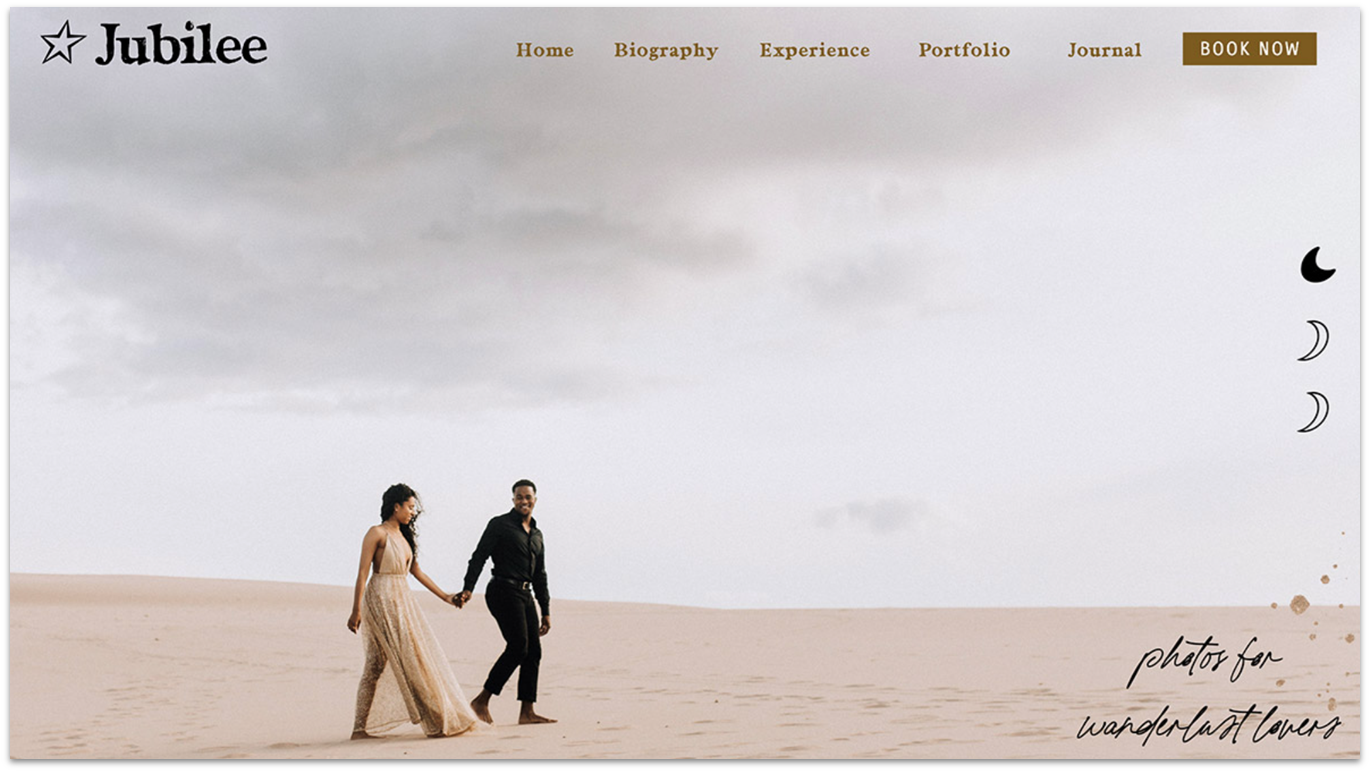
While Showit’s collection is curated with a creative audience in mind – photographers, designers, and other visual professionals – WordPress offers a broader selection that caters to virtually every type of business or personal project.
Another major difference is the design quality. While both platforms deliver unique and aesthetically pleasing templates, WordPress’s themes generally stand out for their superior design. Whether you are running a blog, an online store, or a corporate website, WordPress offers polished, professional templates that almost always surpass the sophistication of Showit’s designs.
Showit’s templates, while customizable, are fairly basic, especially compared to WordPress. With WordPress.com, you get access to themes that give unlimited flexibility. And if you’re a tech-savvy user, you can go under the hood and make changes via custom code like CSS or JavaScript.

Both platforms prioritize mobile responsiveness, but Showit lets you customize your website’s mobile and desktop experience with separate design views. While WordPress creates automatic mobile versions of your desktop site, I found that these versions may still require additional tweaking, particularly regarding image sizes and padding.
I like that WordPress allows you to switch themes without losing content. Showit, unfortunately, only provides this option for blog functionality since it relies on WordPress for blogging. Additionally, WordPress allows you to purchase and integrate third-party themes from platforms like ThemeForest or Divi. Showit, however, restricts users to its native free and premium templates, limiting your range of available design choices.
Showit may appeal to creatives with its specific design-oriented templates and ease of use. However, WordPress offers a vastly superior selection, better design quality, and far more customization options, making it the better choice for users looking for deep flexibility and long-term growth potential.
Features and Ease of Use
Showit’s Editor Is More Intuitive, but WordPress Gives You More Features and Flexibility
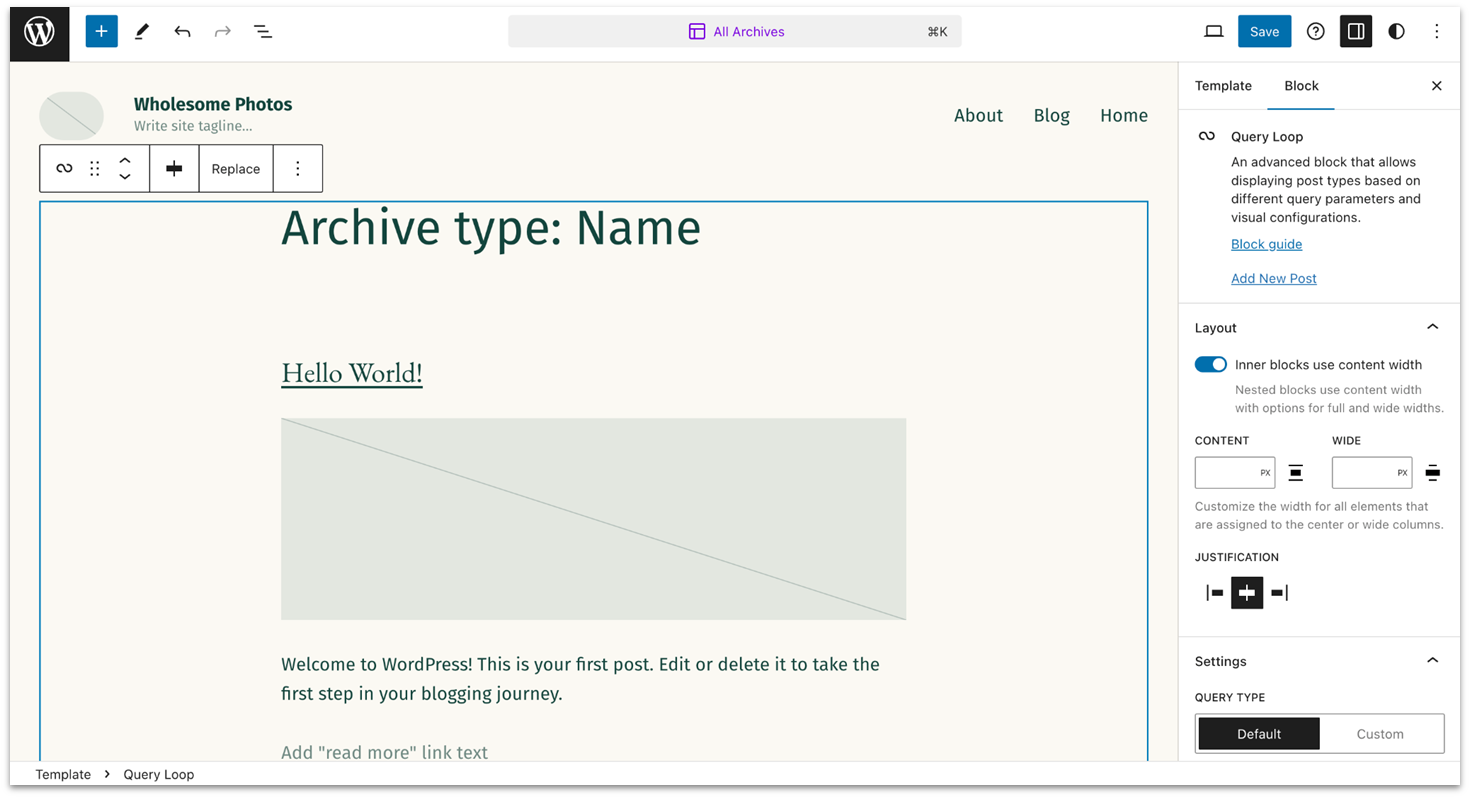
Showit’s intuitive drag-and-drop editor allows you to freely move elements around the page. WordPress, on the other hand, uses the Gutenberg block editor, which is highly customizable and offers more flexibility for building complex websites. While Showit provides a more straightforward experience, WordPress.com’s editor offers more possibilities once you master its steep learning curve.
Regarding blogging, both platforms are comparable because Showit uses WordPress for its blogging features. This gives Showit users access to all of WordPress’s powerful tools, including formatting options, tags, categories, and post scheduling.
That said, e-commerce is where WordPress pulls ahead decisively. With access to WooCommerce and plugins for building online stores, you can create highly functional e-commerce websites.
Showit lacks native e-commerce tools, limiting you to embedding third-party widgets or linking to external stores. But I do like how it lets you integrate WooCommerce via your WordPress blog on the Advanced Blog plan. Still, WordPress offers a far more comprehensive solution out of the box.
Plugins and Add-Ons
WordPress’s Plugins Give It a Clear Advantage
WordPress gives you access to over 50,000 plugins through its marketplace, enabling nearly any feature you can think of – whether it’s marketing, SEO, e-commerce, or security. These plugins come in both free and paid versions, offering flexibility depending on your needs.
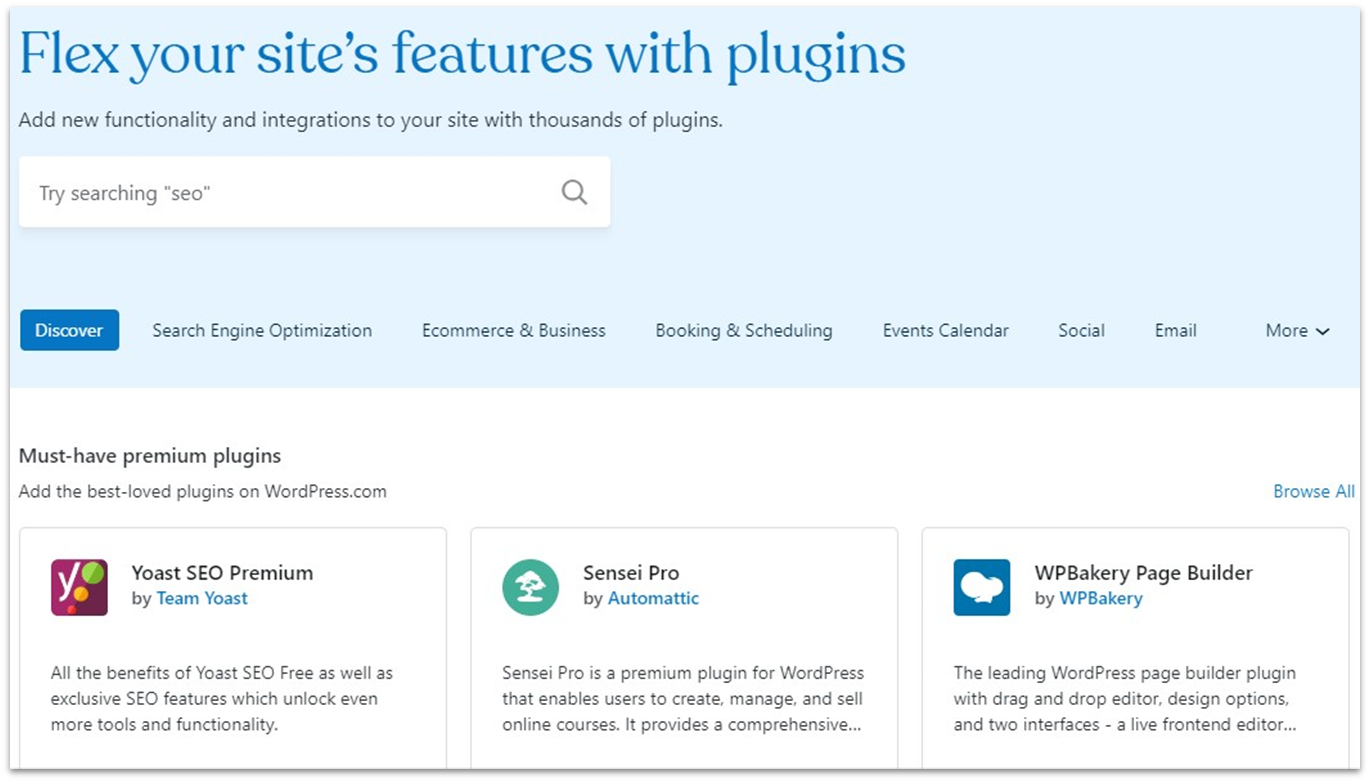
On Showit, however, the available add-ons are primarily design templates rather than functional applications or software, and you’ll have to purchase them through Showit’s store. This makes Showit less versatile than WordPress, especially if you want to add advanced functionality.
You must be on WordPress’s Business or Commerce plan to install extra plugins. However, you’ll find many pre-installed plugins for standard functions on all plans. So, if you’re looking to add a specific feature or functionality with a plugin, it might already be available to you without needing to upgrade.
With Showit, you’ll have access to all its add-ons, no matter which plan you choose. Since Showit uses WordPress for blogging, the second-tier Showit plan also gives you access to WordPress’s pre-installed plugins.

E-Commerce
WordPress Provides Seamless Integration With WooCommerce
WordPress, particularly when combined with the WooCommerce plugin, offers a complete and highly customizable e-commerce solution. Setting up an online store is relatively straightforward with WooCommerce – you’ll be able to easily add products, manage inventory, and accept payments.
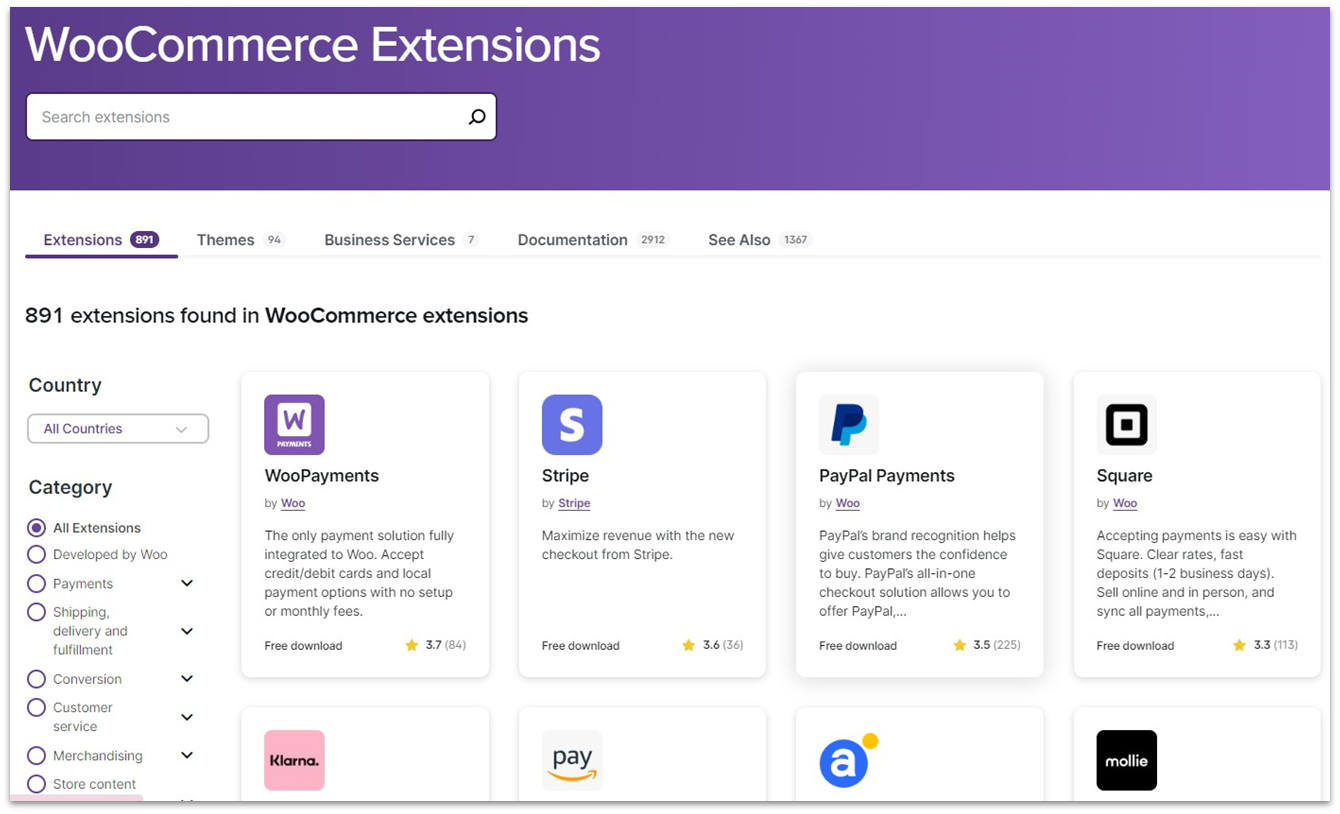
WooCommerce is free to use, though additional costs can come from extensions that offer features such as tax calculators, shipping label printing, and more. You’ll also be able to process offline sales through WooCommerce’s web-based point-of-sale (POS) application.
WordPress also integrates with a variety of payment gateways. It also provides several native e-commerce features, including inventory management, back-in-stock notifications, dynamic product upsells, bulk discounts, and so much more. What’s more, thanks to its extensive plugin library, you can integrate advanced tools for customizable forms, tracking and reporting, and email marketing.
Showit, on the other hand, doesn’t have built-in e-commerce capabilities. To add e-commerce to your Showit site, you’ll typically need to embed external shopping cart tools, which can make the process more complicated.
Adding products and managing inventory is done outside of Showit, so you’ll need to rely on these external platforms to handle the core aspects of e-commerce. This also means additional costs for subscriptions to these third-party tools, making it potentially more expensive for you to run an online store on Showit compared to WordPress.
SEO
WordPress Offers More Advanced SEO Tools
WordPress has more SEO features, including customizable titles, meta descriptions, clean URLs, and auto-generated XML sitemaps. It also allows for site verification and Google Analytics integration, which is essential for tracking your site’s performance.
WordPress further enhances its SEO offerings through plugins, such as Yoast SEO and All in One SEO, which provide additional optimization functionalities like content analysis and keyword management. WordPress also ensures site performance with tools like AMP integration, SSL certificates, and a global content delivery network (CDN), improving page speed and security, which are vital for SEO rankings.
Showit, on the other hand, offers more basic SEO features, such as setting SEO page titles and meta descriptions, optimizing images and media with alt text, and adding HTML text tags to your content. Although these are essential for SEO, Showit doesn’t offer the same depth of tools available on WordPress.
Pricing
WordPress is More Cost-Effective Than Showit
Both Showit and WordPress offer a range of pricing options to suit different needs. WordPress’s free plan gives you a taste of what the platform has to offer. These include multiple free themes, unlimited pages, built-in newsletters, contact forms, social media integration, and donations and tips collection.
If you want access to premium themes, an ad-free experience, lower payment transaction fees, and a free domain for one year, you’ll have to upgrade to the Personal plan, which starts at $4.00/month. Higher-tier plans like the Business package ($25.00/month) include 24/7 customer support, access to plugins, unlimited bandwidth, and 0% transaction fees for standard WooCommerce payments.
Meanwhile, for $45.00/month, the Commerce plan adds many features. These include optimized WooCommerce hosting, unlimited products, inventory management, multi-currency payments, shipping carrier integration, and 0% transaction fee for payments.
Showit, on the other hand, doesn’t have a free plan. However, it does give you a free 14-day trial, so you can explore its offerings risk-free. Its $19 entry-level plan is pretty minimalistic, as it only gives you access to the editor and 20 GB of media storage.
The Showit & Basic Starter Blog package adds 20 GB of blog storage. It costs $24/month and includes WordPress integration for blogging, giving you access to all the pre-installed plugins. If you also want premium WordPress plugins, you’ll need to subscribe to the Showit & Advanced Blog plan for $34/month.
Here are two comparable plans side by side:
| Showit & Basic Starter Blog | WordPress Business | |
| Starting Price | $19 | $25.00 |
| Included Templates/Themes | 35+ free templates | 80+ free themes |
| Free Domain | ✘ | ✔ |
| Access to WordPress Pre-Installed Plugins | ✔ | ✔ |
| Access to WordPress Premium Plugins | ✘ | ✔ |
| Maximum Storage | 20 GB | 50 GB |
| 24/7 Support | ✘ | ✔ |
Support
You Have Limited Support Options on WordPress’s Free Plan
Showit provides live chat support, email support, and access to a comprehensive help center. The live chat and email support are open to all users (including those on a free trial), and support is available from Monday to Friday, 7 a.m. – 11 p.m. Arizona Time. Its help center covers a wide range of topics, including how to build your site and blog, domain connection assistance, troubleshooting tips, SEO and analytics setup, and relevant FAQs.
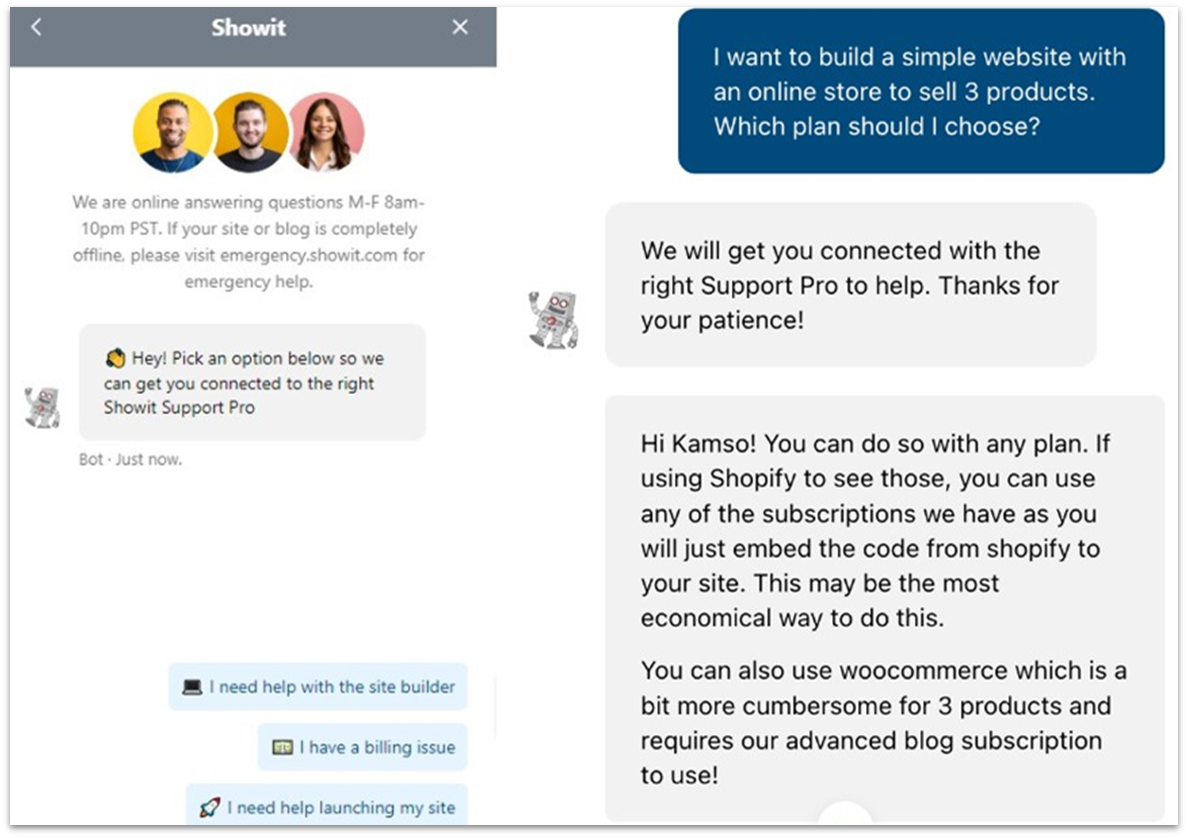
WordPress, on the other hand, provides 24/7 live chat and email support only for Premium plan members and above. If you’re on the free plan, you’ll have to rely on the extensive community forum and a knowledge base that offers more extensive guides than Showit’s. These cover basic website creation principles and advanced topics like monetizing your site, plugin installation, and e-commerce integrations.
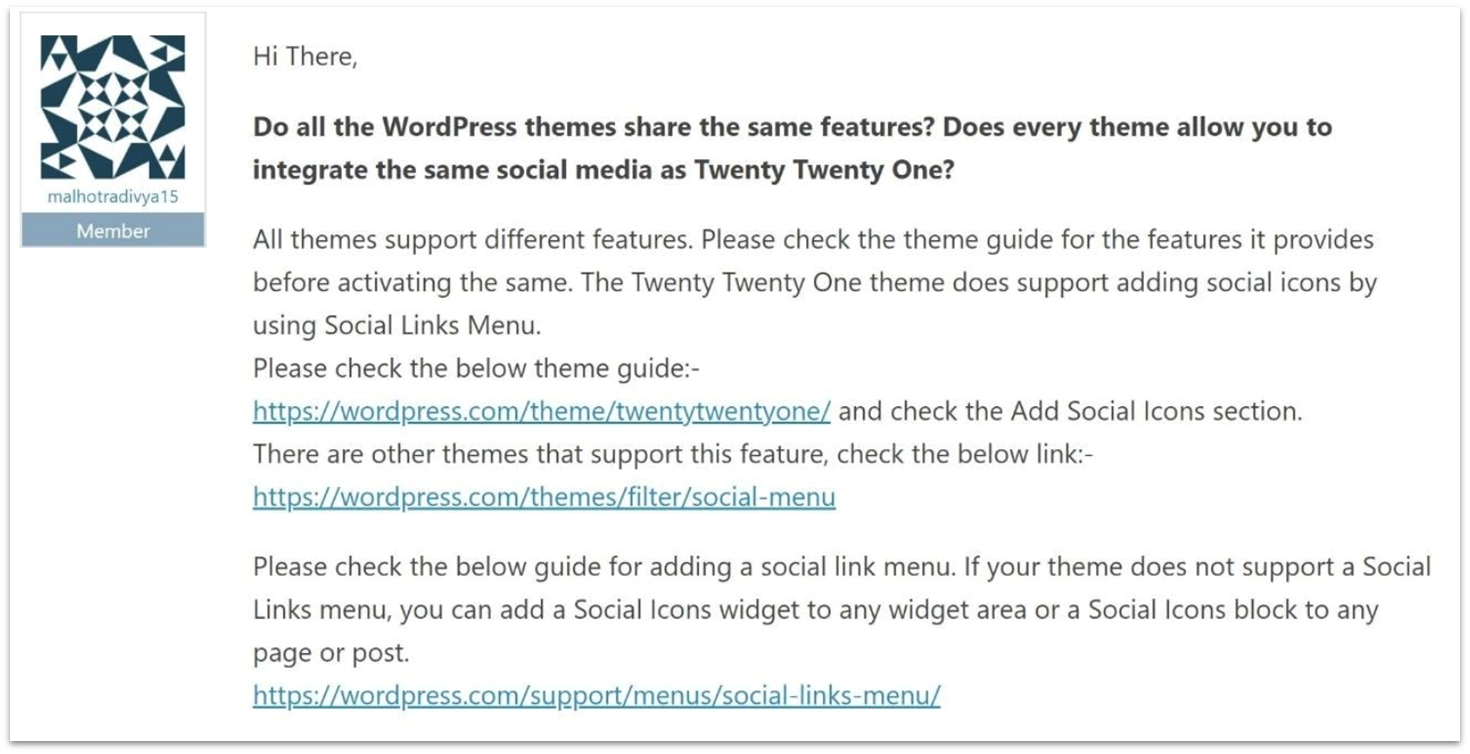
When I tried Showit’s live chat, I got a reply to my inquiry after nearly 4 hours – that’s a lot of wait time for a live chat. Meanwhile, WordPress’s forum users responded to my post after a couple of days. While none of these response times are impressive, both platforms provided helpful and professional responses during my tests.
WordPress Gives You Everything Showit Offers and Way More
After putting both platforms to the test, WordPress came out on top. It has far more customization options, a massive library of themes and plugins, and robust e-commerce and SEO features. You get the freedom to design anything you want, and it’s perfect for those who need a website that can grow alongside their business.
If you’re looking for something simple and like the idea of a drag-and-drop editor, Showit might be enough for you – especially if you’re a photographer or creative who doesn’t need advanced features. However, WordPress is better if you’re serious about scaling, need more design flexibility, or want access to the best tools available.
Here’s a quick comparison to help you decide:
Premium plans start at $19
FAQ
Is WordPress better than Showit?
Yes, WordPress is better than Showit, especially if you need more flexibility and long-term growth. It offers over 160 themes and 50,000 plugins, giving you more design and functionality options. It also has superior SEO tools and e-commerce capabilities through WooCommerce and allows for advanced customization with code.
Do you have to pay for Showit and WordPress together?
No, you don’t need to pay separately for Showit and WordPress. Showit includes WordPress integration in its plans, so you only pay for your chosen Showit plan. However, subscribing directly to a WordPress plan might be a better option, as it offers more themes, plugins, and customization options for a similar price to Showit’s higher-tier plans.
Does Showit integrate with WordPress?
Yes, Showit integrates with WordPress specifically for blogging. This integration allows you to access WordPress’s blogging features, including pre-installed and advanced plugins – depending on the Showit plan you go for.
What website builder is better than WordPress?
Several website builders are better than WordPress, and Wix is one of them. Its user-friendly drag-and-drop interface lets you set up a site in a few minutes without coding. It also provides native features like SEO tools, blogging, and e-commerce options. However, unlike WordPress, you don’t need plugins to access these tools.

















